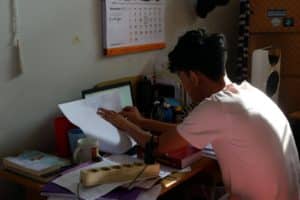
What is the 2nd pillar in Switzerland?
Our expert advice
In order to maintain a comfortable standard of living similar to that of your working life, it is strongly recommended that you supplement your pension plan with an insurance policy. 3rd pillar .
How can I benefit from the 2nd pillar?
Who contributes to the LPP?
- You are an employee with an annual income of at least CHF 22,680.
- You are at least 17 years old
How do I withdraw my 2nd pillar?
- Retirement: When you retire, you can receive the entire capital or convert it into an annuity.
- Withdrawal for the purchase of a property: When you buy a property, you can withdraw your 2nd pillar funds as a lump sum.
- Withdrawal if self-employed: If you choose to become self-employed, you can withdraw your 2nd pillar pension to invest in your business.
- Withdrawal on departure from Switzerland : Under certain conditions, you can withdraw your 2nd pillar pension when you move abroad.
2nd pillar: withdrawal tax
When you withdraw your 2nd pillar, you will have to pay municipal, cantonal and federal taxes. Tax rates vary from canton to canton.
Withdrawal tax is a progressive rate, depending on the amount withdrawn and the canton of residence. For example, it is lower in the German-speaking cantons, while it is higher in French-speaking Switzerland.
2nd pillar and vested benefits
When you work in Switzerland, you and your employer contribute money to a "pension credit" for your retirement, managed by a pension fund.
If you change jobs, the money you have accumulated (known as "vested benefits") must be transferred either to your new employer's pension fund, or to an institution of your choice.
It is essential to ensure that the money is transferred and to choose the institution that suits you best. You will receive a certificate once the money has been transferred.
2nd pillar in the event of divorce
In the event of divorce or dissolution of a registered partnership, each spouse is entitled to half of the 2nd pillar assets and vested benefits accumulated by the other during the marriage or partnership.
Here's how the 2nd pillar is divided between the spouses in the event of divorce:
Spouse n°1: He or she must transfer half the benefits acquired during the marriage to his or her former spouse. After the divorce, this share will be transferred by his pension fund to the fund chosen by the former spouse.
Spouse n°2: He or she will receive half of his or her former spouse's vested termination benefit accumulated during the marriage. This half will be transferred to the pension fund of his or her choice.
2nd pillar in the event of death
In the event of death, the law determines the beneficiaries of your vested benefit credit, mainly the surviving spouse or heirs, who generally receive the amount in a single payment.
If you leave no spouse or minor children, we recommend that you check with your pension fund whether and how you can designate other beneficiaries. Depending on the rules of your pension fund, an annuity may also be payable.
2nd pillar purchase
If there is a gap, you can make payments into your 2nd pillar to increase your pension when you retire. Gaps may exist for a variety of reasons, such as leaving Switzerland for a period of time.
Just like payments into your 3rd pillar, 2nd pillar purchases are deductible of your taxable income. What's more, 2nd pillar assets are exempt from tax.wealth tax, and the interest are not included in taxable income.
Frequently asked questions about the 2nd pillar in Switzerland
How does the 2nd pillar work in Switzerland?
In Switzerland, the 2nd pillar is part of the pension system designed to maintain workers' standard of living after retirement.
Employees and employers contribute monthly. Funds can be withdrawn on retirement or in special circumstances, such as the purchase of a principal residence or a permanent move abroad.
How do I know if I have 2nd pillar insurance?
Check your pay slips to see whether contributions are being made to your occupational pension scheme. Every year, your pension fund should send you a certificate showing your savings and future benefits.
If you need to track down pension savings from previous jobs and are unable to contact former employers or funds, contact the 2nd Pillar Central Office for help.
How can I withdraw my 2nd pillar to buy a home?
You can withdraw your 2nd pillar capital to buy a home under certain conditions conditions.:
It is possible to withdraw your BVG to buy a house or apartment, but only the property will be your own. principal residence.
Up to 50 yearsAt age 50, you can withdraw your entire 2nd pillar. After age 50, you can only withdraw a portion.
How can I withdraw my 2nd pillar when I leave Switzerland?
You can withdraw your 2nd pillar when you leave Switzerland under certain conditions conditions.:
It is possible to withdraw your BVG when you leave Switzerland definitively.
If you move to an EU or EFTA country and are insured for old age in that country, only the part of the benefit exceeding the statutory BVG/LPP minimum may be paid out in cash; the remainder must remain in Switzerland until retirement or in the event of death/disability.
What is a pension fund?
In Switzerland, a pension fund is an institution that manages employees' occupational benefits (2nd pillar).
You can find out more about how pension funds work at Swiss Confederation website.
When can you withdraw your 2nd pillar?
You can withdraw your 2nd pillar in the following situations:
- To the retirementwhere you can choose to receive all the capital instead of converting it into annuities.
- For the purchase of a property owners,by withdrawing the funds in the form of capital.
- By becoming independent workerto bring funds into the business.
- During a departure from Switzerlandunder certain conditions.







